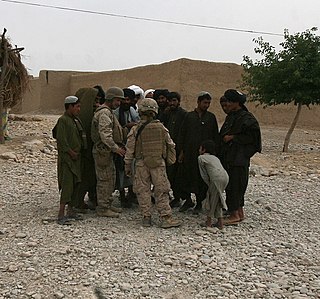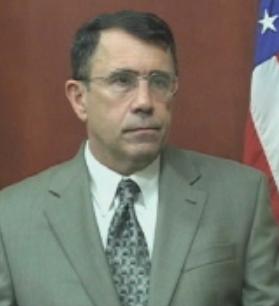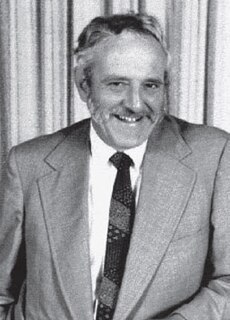 W
WMilitary intelligence is a military discipline that uses information collection and analysis approaches to provide guidance and direction to assist commanders in their decisions. This aim is achieved by providing an assessment of data from a range of sources, directed towards the commanders' mission requirements or responding to questions as part of operational or campaign planning. To provide an analysis, the commander's information requirements are first identified, which are then incorporated into intelligence collection, analysis, and dissemination.
 W
W35T, previously 33W, is the Military Occupational Specialty (MOS) for the United States Army's Military Intelligence Systems Maintainer/Integrator.
 W
WThe Afghanistan-Pakistan Center of Excellence is an internal think tank at the United States Central Command focused on Afghanistan, Pakistan, and the Central Asian States. The AFG-PAK COE seeks to build expertise in and provide improved intelligence for the missions in those countries and the states around them. The AFG-PAK COE is planning to help expand the number of U.S. military and civilian experts on Afghanistan and Pakistan by providing them with education and training opportunities covering the culture, language, and region, and keeping these analysts and military forces connected to these missions in those countries when they are between deployments.
 W
WThe US Army Foreign Intelligence Assistance Program, was a 1960s program. One part was "Project X", a military effort to create intelligence field manuals drawn from counterinsurgency experience in Vietnam, specifically from the CIA's Phoenix program in South Vietnam, an assassination program designed to identify and "neutralize" the infrastructure of the Viet Cong. The manuals influenced the "KUBARK Counterintelligence Interrogation-July 1963", "Human Resource Exploitation Training Manual-1983" as well as intelligence manuals used at the School of the Americas.
 W
WRobert Paul Ashley Jr. is a retired lieutenant general in the United States Army who served as the Director of the Defense Intelligence Agency from 2017 to 2020. He previously served as Deputy Chief of Staff of the Army G-2. He received a commission through ROTC as a 1984 graduate of Appalachian State University. He retired from active duty on October 1, 2020. He is the son of a United States Air Force veteran of the Korean War who later lived in North Carolina and worked a sewing machine mechanic.
 W
WScott David Berrier is a lieutenant general in the United States Army who serves as the Director of the Defense Intelligence Agency. Berrier was confirmed by the United States Senate as the 22nd Director of the Defense Intelligence Agency on July 30, 2020, replacing the retiring Lieutenant General Robert P. Ashley Jr. He previously served as the Deputy Chief of Staff of the Army G-2 (intelligence). He received his officer's commission in 1983 through the ROTC program at the University of Wisconsin–Stevens Point.
 W
WDino Antonio Brugioni was a former senior official at the CIA's National Photographic Interpretation Center (NPIC). He was an imagery analyst and also served as NPIC's Chief of Information. During his 35-year career, Brugioni helped establish imagery intelligence (IMINT) as a national asset to solve intelligence problems. Even after retirement, Brugioni was considered to be the world's foremost imagery intelligence analyst.
 W
WLieutenant General Ronald Lee Burgess Jr., United States Army is a retired United States Army Lieutenant General. His last military assignment was as the 17th Director of the Defense Intelligence Agency and Commander of the Joint Functional Component Command for Intelligence, Surveillance and Reconnaissance (JFCC-ISR). Prior to that, he was Director of the Intelligence Staff in the Office of the Director of National Intelligence.
 W
WCounterintelligence is an activity aimed at protecting an agency's intelligence program from an opposition's intelligence service. It includes gathering information and conducting activities to prevent espionage, sabotage, assassinations or other intelligence activities conducted for or on behalf of foreign powers, organizations or persons.
 W
WThe Danish Defence Intelligence Service, DDIS, is a Danish intelligence agency, responsible for Denmark’s foreign intelligence, as well as being the Danish military intelligence service. DDIS is a department under the Ministry of Defence and works under the responsibility of the Minister of Defence. It is housed at Kastellet, Copenhagen.
 W
WDARPA Shredder Challenge 2011 was a prize competition for exploring methods to reconstruct documents shredded by a variety of paper shredding techniques. The aim of the challenge was to "assess potential capabilities that could be used by the U.S. warfighters operating in war zones, but might also identify vulnerabilities to sensitive information that is protected by shredding practices throughout the U.S. national security community". The competition was sponsored by the Defense Advanced Research Projects Agency (DARPA), a research organization of the United States Department of Defense. Congress authorized DARPA to award cash prizes to further DARPA’s mission to sponsor revolutionary, high-payoff research that bridges the gap between fundamental discoveries and their use for national security.
 W
WThe k.u.k. Evidenzbureau was the directorate of military intelligence of the Austro-Hungarian Empire, headquartered in Vienna, Austria.
 W
WFort Huachuca is a United States Army installation, established on 3 March 1877 as Camp Huachuca. The garrison is now under the command of the United States Army Installation Management Command. It is located in Cochise County, in southeast Arizona, approximately 15 miles (24 km) north of the border with Mexico and at the northern end of the Huachuca Mountains, adjacent to the town of Sierra Vista. From 1913 to 1933, the fort was the base for the "Buffalo Soldiers" of the 10th Cavalry Regiment. During the build-up of World War II, the fort had quarters for more than 25,000 male soldiers and hundreds of WACs. In the 2010 census, Fort Huachuca had a population of about 6,500 active duty soldiers, 7,400 military family members, and 5,000 civilian employees. Fort Huachuca has over 18,000 people on post during the peak working hours of 0700 and 1600 on weekdays.
 W
WDerek J. Harvey is a retired US Army Colonel who currently serves on the staff of Congressman Devin Nunes, ranking member of the House Permanent Select Committee on Intelligence. Harvey is a former National Security Council (NSC) staffer in President Donald Trump's administration and was the first Director of the Afghanistan-Pakistan Center of Excellence at U.S. Central Command (CENTCOM), having been selected by General David Petraeus in 2009 to lead the new organization. Harvey was the previous senior analytical specialist for Iraq to Petraeus, then Commander, Multi-National Forces-Iraq. He became a top aide to Republican congressman Devin Nunes on the House Intelligence Committee in September 2017.
 W
WJohn J. Hicks was second director of National Photographic Interpretation Center (NPIC). Hicks was appointed as the Director of NPIC in July 1973, after retirement of Arthur C. Lundahl, first director of NPIC. He served as the Director of NPIC from July 1973 to May 1978.
 W
WRobert M. Huffstutler was director of National Photographic Interpretation Center from February 1984 to January 1988.
 W
WInform Napalm is a volunteer initiative to inform Ukrainian citizens and the foreign public about the undeclared war in Ukraine, the annexation of Crimea, and the activities of the Russian special services as well as the militants of DPR, LPR, and Novorossiya. The team members are engaged in a wide range of other volunteer activities. Authors publish materials to 30 languages, including Japanese and Chinese.
 W
WEduardo Jesus Lopez-Reyes, of Greenwich, Connecticut, is an American Republican Party activist and former National Vice Chairman of the Republican Liberty Caucus.
 W
WArthur Charles "Art" Lundahl was the key organizer of the US post-World War II imagery intelligence (IMINT), and an aerial-photography expert whose detection of missile installations in Cuba in 1962 led to the Cuban Missile Crisis.
 W
WSidney Forrester Mashbir was a senior officer in the United States Army who was primarily involved in military intelligence. Born in New York, he served in the Arizona Army National Guard during the Mexican-American Border War. Mashbir then held several posts in intelligence positions, taking credit for catching the first German spy in the United States, before departing for on a four-year assignment as a language officer to Japan in 1920. He resigned from the army in 1923 in an attempt to execute his own master plan devised to extract intelligence from Japan in event of a war. His plan failed as a result of the Great Kantō earthquake in September 1923 and he was left bankrupt; he consequently returned to the US as an engineering businessman.
 W
WThe Maul Camera Rocket was a rocket for aerial photography developed by Alfred Maul's company from 1903 to 1912. The Maul Camera Rocket was demonstrated in 1912 to the Austrian Army and tested as a means for reconnaissance in the Turkish-Bulgarian War in 1912/1913. It was not used afterwards, because aircraft were much more effective.
 W
WThe Military Counterintelligence Service is one of the principal intelligence agencies of Poland. It is responsible for the protection of Poland against internal threats and for the combat capability of the Polish Armed Forces.
 W
WThe Military Intelligence Service was a World War II U.S. military unit consisting of two branches, the Japanese American unit and the German-Austrian unit based at Camp Ritchie, best known as the "Ritchie Boys". The unit described here was primarily composed of Nisei who were trained as linguists. Graduates of the MIS language school (MISLS) were attached to other military units to provide translation, interpretation, and interrogation services.
 W
WThe Ministry of Intelligence is a government ministry in Israel. It oversees policies related to the operation of the intelligence organizations, the Mossad and the Shabak, in support of the national security of the State of Israel, in coordination with and under the guidance of the prime minister. The current Minister of Intelligence is Eli Cohen.
 W
WThe Naval Information Warfare Center Atlantic is an Echelon III activity of the United States Navy located in North Charleston, South Carolina. The center’s mission is to deliver information warfare solutions that protect national security. This includes communication systems (radios), networking systems (routers/switches), cyber operations, intelligence, surveillance, reconnaissance, business systems (benefits/personnel) and information security.
 W
WThe NAVWAR Space Field Activity (NSFA) is one of three Echelon III activities under the Naval Information Warfare Systems Command (NAVWARSYSCOM) of the United States Navy, co-located with the National Reconnaissance Office (NRO) in Chantilly, Virginia.
 W
WOperation Dark Heart: Spycraft and Special Ops on the Frontlines of Afghanistan and the Path to Victory is a 2010 memoir by retired United States Army Reserve intelligence officer Lt. Col. Anthony Shaffer. The book details Shaffer's five months in Afghanistan in 2003 as a civilian Defense Intelligence Agency officer. Before redactions, the book contained names of intelligence officers and described clandestine operations, including "N.S.A.'s voice surveillance system." The United States Department of Defense went to extreme lengths in an attempt to censor information in the book after it had already been printed.
 W
WThe order of battle for the Viet Cong concerned a contested American intelligence issue of the Vietnam War. Arising In the mid-1960s, its focus was the count of enemy combatants. Often called the order of battle controversy, the debate came to divide the Central Intelligence Agency (CIA), and challenge military intelligence. The politics and strategy of the war became involved in the debate.
 W
WP.O. Box 1142 was a secret American military intelligence facility that operated during World War II. The American Military Intelligence Service had two special wings, known as MIS-X and MIS-Y.
 W
WProject Camelot was the code name of a counterinsurgency study begun by the United States Army in 1964. The full name of the project was Methods for Predicting and Influencing Social Change and Internal War Potential. The project was executed by the Special Operations Research Office (SORO) at American University, which assembled an eclectic team of psychologists, sociologists, anthropologists, economists, and other intellectuals to analyze the society and culture of numerous target countries, especially in Latin America.
 W
WLieutenant General William Wilson "Buffalo Bill" Quinn was a United States Army officer, who served in intelligence during World War II. Born in Crisfield, Somerset, Maryland and a 1933 graduate of West Point, Quinn retired as a lieutenant general on March 1, 1966 as the commanding general of the Seventh United States Army. He died in Washington, DC at Walter Reed Army Hospital at 92 years old.
 W
WRoyal School of Military Survey is a joint services survey training facility associated with the Corps of Royal Engineers (RE) but attached to the United Kingdom Defence Intelligence and Security Centre (DISC).
 W
WRussian military deception, sometimes known as maskirovka, is a military doctrine developed from the start of the twentieth century. The doctrine covers a broad range of measures for military deception, from camouflage to denial and deception.
 W
WDavid R. Shedd is a retired U.S. intelligence officer whose final post was as the acting Director of the Defense Intelligence Agency. He is a former Central Intelligence Agency operative.
 W
WSignals intelligence (SIGINT) is intelligence-gathering by interception of signals, whether communications between people or from electronic signals not directly used in communication. Signals intelligence is a subset of intelligence collection management. As sensitive information is often encrypted, signals intelligence in turn involves the use of cryptanalysis to decipher the messages. Traffic analysis—the study of who is signaling whom and in what quantity—is also used to integrate information again.
 W
WA SIGINT Activity Designator identifies a signals intelligence (SIGINT) line of collection activity associated with a signals collection station, such as a base or a ship. For example, the SIGAD for Menwith Hill in the UK is US$1000. SIGADs are used by the signals intelligence agencies of the United States, the United Kingdom, Canada, Australia and New Zealand.
 W
WTitan Rain was a series of coordinated attacks on computer systems in the United States since 2003; they were known to have been ongoing for at least three years. The attacks originated in Guangdong, China. The activity is believed to be associated with a state-sponsored advanced persistent threat. It was given the designation Titan Rain by the federal government of the United States.
 W
WUltra was the designation adopted by British military intelligence in June 1941 for wartime signals intelligence obtained by breaking high-level encrypted enemy radio and teleprinter communications at the Government Code and Cypher School (GC&CS) at Bletchley Park. Ultra eventually became the standard designation among the western Allies for all such intelligence. The name arose because the intelligence obtained was considered more important than that designated by the highest British security classification then used and so was regarded as being Ultra secret. Several other cryptonyms had been used for such intelligence.
 W
WUnited States Army Counterintelligence (ACI) is the component of United States Army Military Intelligence which conducts counterintelligence activities to detect, identify, assess, counter, exploit and/or neutralize adversarial, foreign intelligence services, international terrorist organizations, and insider threats to the United States Army and U.S. Department of Defense (DoD).
 W
WThe United States Army Intelligence Center of Excellence (USAICoE) is the United States Army's school for professional training of military intelligence personnel. It is a component of United States Army Training and Doctrine Command (TRADOC).